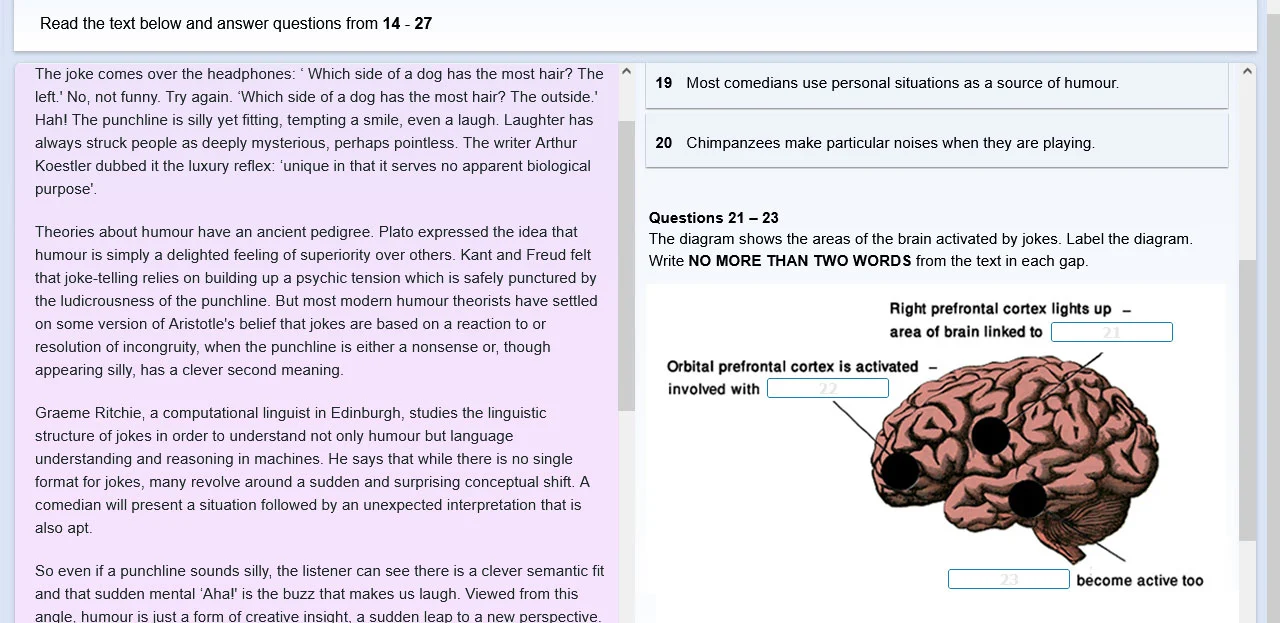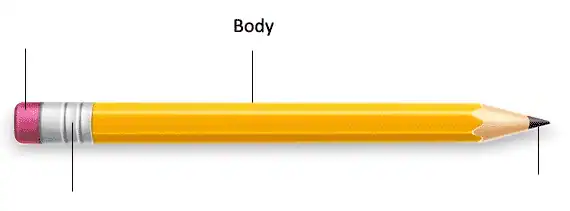IELTS Reading Tips | Diagram-label Completion Question
How to master the Diagram-label Completion Question
How to master the Diagram-label Completion Question
- A diagram is used when a text describes a certain concept which is difficult to visualise through words only, and therefore a visual representation such as a picture or a drawing makes the process clearer and easier to understand.
- In IELTS Reading, the diagram completion question requires you to label (to name) different parts of a diagram, using words taken directly from the text.

Useful Tips:
- Check the number of words you may use to answer the questions. The instructions will indicate the maximum number of words that you may take directly from the text to use as your answer. The instructions may say 'use no more than 2 words'. This means you may use 1 or 2 words from the text, but no more than that.
- The instructions will suggest you spend 20 minutes on this passage. Keep in mind that this will not be the only question type for this passage. You will need to answer more than one question type relating to this same passage. If they have been completed prior to this question type, familiarisation with this passage should help speed up the process of filling the gaps of this question type.
- The topic of the passage may be related to a previous passage in that same IELTS Reading test. If that is the case, this should help ease the process of skimming and identifying information, as you will not be required to adjust to a new topic.
- Try to understand what the diagram represents. Take the time to understand the topic of the diagram, so you can prepare to read about it in the text. This also includes understanding what the title of the diagram means.
- Pay attention to any written information surrounding the diagram. Such information may help you understand the diagram better, and therefore understand the text better.
- The questions will be gaps that need filling-in. Familiarise yourself with all the information provided with the diagram so you can increase your chances of finding the words that fit the gaps. You may paraphrase key words and phrases to identify in the text, if available.
- Think about the type of word you may need to fill in the gap. Based on the information available on the diagram, are you looking for a noun? A verb? An adjective? Remember, you must use words from the text as they appear, so use all the information available to you to determine which ones to choose as your answer.
- To make the most of your time, spend no longer than 1 to 2 minutes skimming the passage.
- When skimming the text, you may want to read the first and last paragraphs to get the general idea. Reading the first sentence of each paragraph, also known as the 'topic sentence' should help provide you with a sense of the theme of each paragraph.
- Use words taken directly from the text. Once you have skimmed, scanned and located the necessary information, make sure that you use words taken directly from the text, and do not paraphrase them.
- Bear in mind, answers do not always come in order. Skimming and scanning the text, as well as good familiarisation with the diagram and its description should help ease the process of identifying the information. Remember you will have been familiar with the general topic if other questions types on this passage were completed, so this should go in your favour, as well.
- Now is the time to practise this type of question:
-
Stationary Consumption in the USAThe first step of making pencils concerns the wood. First, there are blocks of wood that are longer than the pencil's size. Those blocks get sliced using very tin saws, forming thinner slats.Machines create grooves that allow space for lead to be inserted in a single slat. A second slat is placed over the first one using glue. Once the glue dries, it can be shaped like the pencil we know. This forms the body of the pencil.The ferrule, which is a metal ring that holds the eraser, is creased together with the eraser into the pencil, using a tipping machine.
-
Write ONE WORD ONLY from the passage in each gap.

- Explanation:
- The key information in the text is underlined below:
-
'The ferrule, which is a metal band that holds the eraser'
- On the diagram, we can see a circular strip and a red tip attached to it. The circular strip is the 'metal ring' mentioned in the text, and is therefore the 'ferrule'. The text mentions that the 'eraser' is held by the ferrule.
- So, answer 1 is 'eraser', and answer 2 is 'ferrule'.
- Machines create grooves that allow space for lead to be inserted in a single slat. A second slat is placed over the first one using glue. Once the glue dries, it can be shaped like the pencil we know. This forms the body of the pencil.
- So, answer 3 is 'lead'.
1 comment

Qen NguyenDec 05, 2024
Great
You must login to post comments!